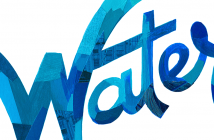As a gamer, I love when stories are told through objects. Video games like Gone Home and don’t give you any explanation or backstory on what’s happening, just an environment with objects that, when interpreted, collaboratively tell the story of what happened in the place you’re inhabiting. Playing , we learn so much about people’s lives and how they got infected by exploring abandoned houses and interacting with the objects left behind. What’s so powerful about these found objects is that they require the player to make connections and realizations, and leave the player with a sensory tangible experience instead of an abstraction of information. This embodies the often-used truism of the creative writing classroom: “show don’t tell” — that is, let your reader come to conclusions instead of explaining everything to them. Readers are smart; they can make conclusions on their own.
When I started rewriting my most recent YA project, I was thinking about video games’ storytelling devices and wondered if I could tell a story purely through found objects. Since my MC is a budding psychologist, these objects included: charts, graphs, consent forms, research papers, homework assignments, texts, and other objects she’d naturally use in her daily experiences. Since I had been working in poetry for a while and found fiction daunting, these objects not only gave me a new, interesting angle to work with, but helped make rewriting a novel feel a little less daunting.
As a reader, I grew up with E. Lockhart’s The Boy Book and Lauren Myracle’s ttyl series, and only recently have I realized how their use of objects was so revolutionary to me as a reader. While The Boy Book has quite a bit of standard narration, the excerpts from the “boy book”, emails and Ruby’s lists give us voice and narrative information without interrupting the main storyline. ttyl condenses story purely to instant message dialogue — and in visually maintaining the format of instant messaging made me as a reader feel even more immersed in the experience.
I’m excited to see that many YA authors are exploring how to effectively use found objects in their novels to give their readers information. One book that does this in a really interesting way is Life on the Refrigerator Door by Alice Kuipers. The book, as the title implies, is composed purely of refrigerator notes exchanged between a daughter and her mother. It’s surprising how much information can be conveyed in these brief notes, and how the barrier between reader and protagonist diminishes as we’re in direct contact with the objects the characters themselves encounter and write.
While Life on the Refrigerator Door is fascinating, purely using objects to tell a story gets exhausting over time. I found as I worked on my YA project that I needed some “breathers” between found objects and chose to incorporate narrated diary entries that give readers a little more context, and rest from doing so much work. What I realized in the end is that (this might seem obvious) novels are different mediums than video games. Readers expect a different experience than gamers. And because of this, novels have to carefully balance objects with narration.
This is why I really love Julie Israel’s debut YA Juniper Lemon’s Happiness Index. Juniper is trying to cope with her sister’s death, and when she loses a paper that had some of her vulnerable thoughts about that death on it, she starts dumpster diving—and what she discovers in the process is fascinating. The way we as readers learn about Juniper’s classmates and family is the same way Juniper learns about them: through found objects. As she searches, she finds a newspaper obituary, a note threatening suicide, love letters to famous artists, and more. The objects are just as surprising to us as readers as they are to Juniper, and do so much work in such a small space. Instead of Julie explaining that the mother can’t cope with her daughter’s death, we find an obituary hidden in a box of baking soda in the pantry. I remember this because it wasn’t an abstract piece of information, it was a sensory detail that I could see, and that made me “fill in the gaps” to understand who this mother character is better.
I could go on and on about how YA authors are integrating interesting objects into their stories — and all the new ways authors are finding to break down the barrier between reader and protagonist. As I think about these books, I’m reminded of my poetry professor, who in graduate school kept telling me to cut off the last stanza of my poems. He said I explained too much and wasn’t trusting my reader. He would cut off my poems to end on an image. He quoted Ezra Pound, saying: “The natural object is always the adequate symbol” — that is, objects do the work of making a statement on their own; they don’t need any explanations. What’s great about this phrase is that it doesn’t just apply to poetry, but any good writing: whether in games, poems or YA novels.
What YA books would make great roleplay games?



